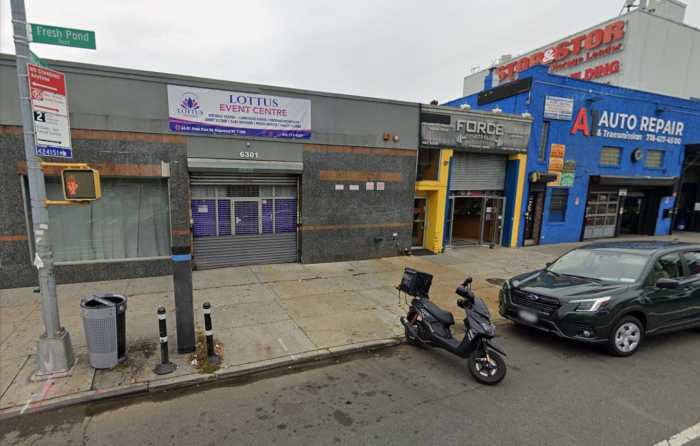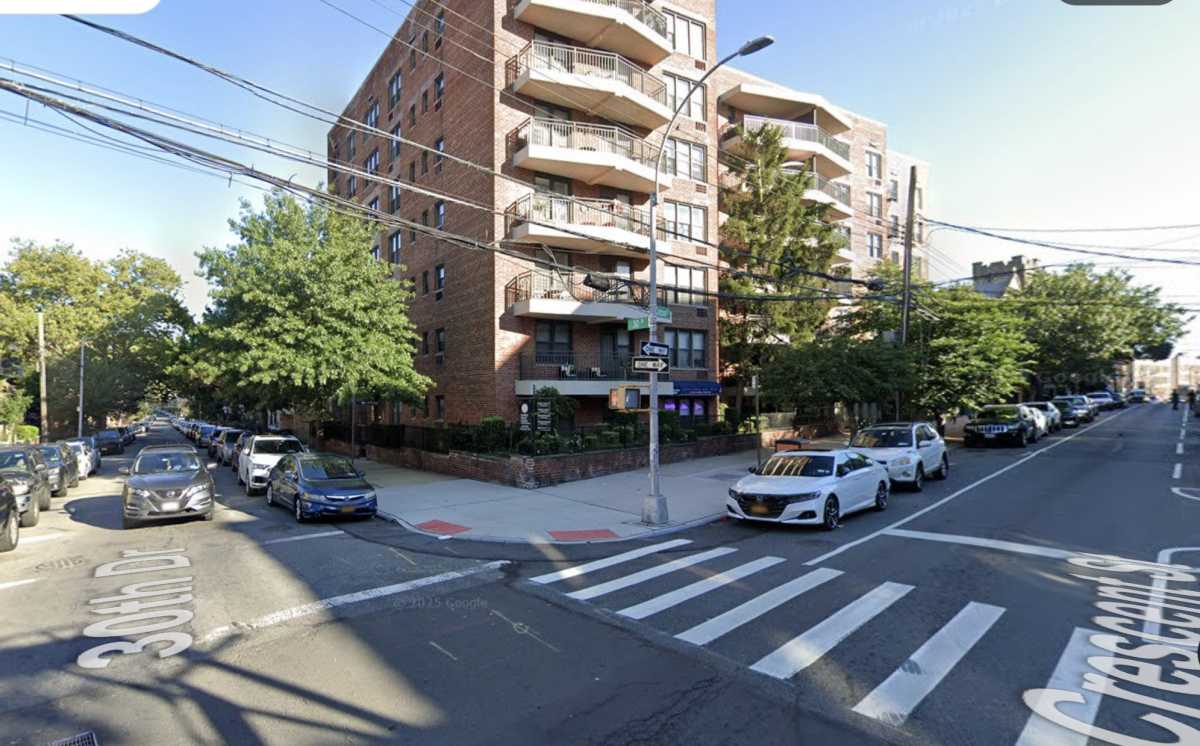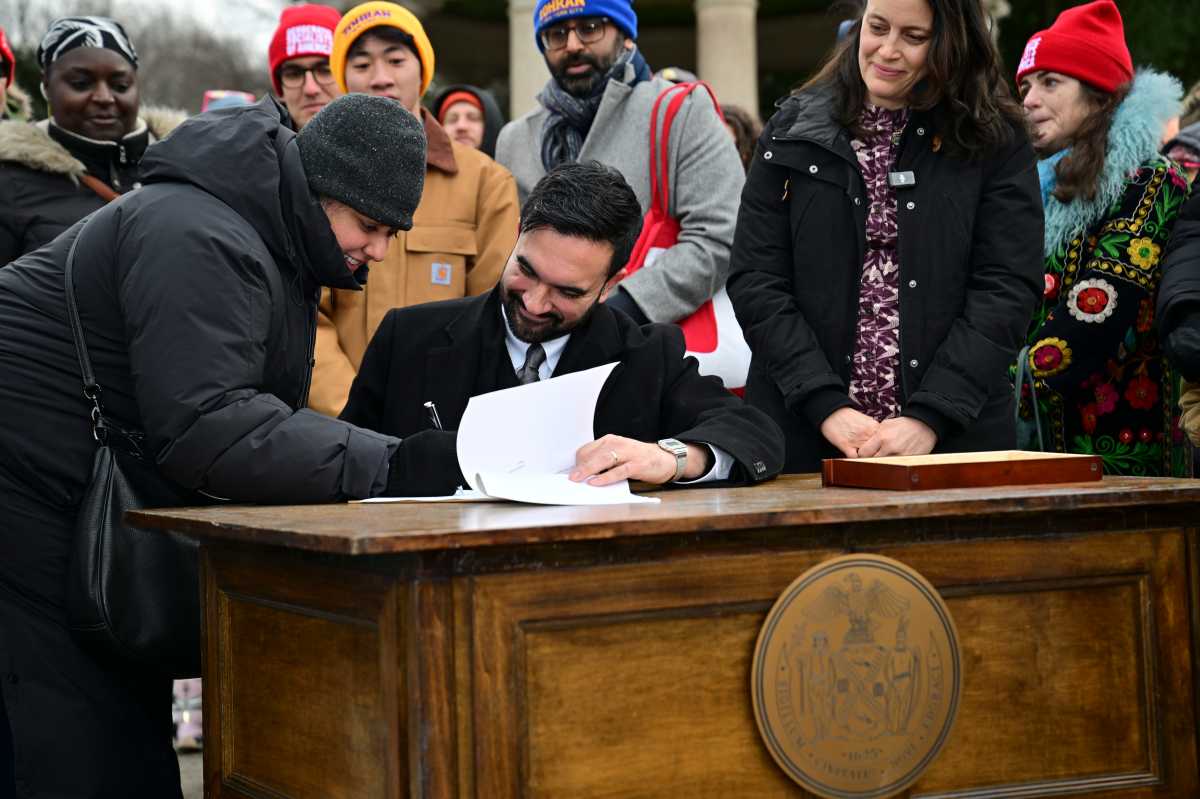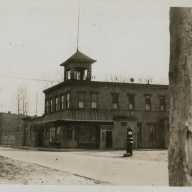A movie theater in Ridgewood, which presented films for nearly a century, shut its doors recently, leaving local residents guessing what would become of the building - preservationists calling for it to be landmarked and several activists asking that it be converted into a performing arts venue.
On Thursday, March 27, as Bushwick residents Lewis and Maria Rodriguez strolled down Myrtle Avenue, past the closed theatre, they wondered if a bank would fill some of the 17,000 square feet of retail space advertised on a sunny yellow poster.
“They should make it into a theater again,” Maria said. “It would be good for the community.”
Her husband said that during his weekly Sunday walks he would oftentimes stop to catch a flick.
“You know what he used to do. He would go see a movie and half the time he would be sleeping,” Maria Rodriguez said of her husband.
Among Lewis Rodriguez’s favorites are action films and martial arts movies.
“I remember when a movie here was only $1.50,” Lewis Rodriguez said, joking that his memory dated back to 100 years ago.
The Ridgewood theatre, however, opened in 1916.
Modeled after Times Square’s former Strand Theatre, designed by Thomas White Lamb and built by the Levy Brothers, the three-story theater cost $250,000 to construct, said preservationist Michael Perlman.
Perlman believes that the Ridgewood Theatre had been the longest continuously running, neighborhood movie house in New York City before closing its doors on March 9.
Its faade, which featured ornate geometric patterns, medallions, a frieze and pilasters, was constructed from Indiana limestone and terra cotta. Originally outfitted to fit 2,500 patrons, the movie theater was reconfigured in the 1980s into a multiplex and currently holds five screens and seats 1,950.
“It’s architecture is very ornate, truly one of a kind. The faade is pretty much intact from its heyday,” said Perlman, who chairs the Rego-Forest Preservation Council and serves as a member of the Queens Preservation Council’s Board.
Perlman, along with producer Albert Allie, proposed that the space instead be converted into a non-profit community theater and independent film-screening house with acting classes.
Another proposal from preservationists is to landmark the structure, a plan supported by the Theatre Historical Society of America. A landmark designation would prevent the property owner from drastically altering the exterior.
A spokesperson from the New York City Landmarks Preservation Commission (LPC) said that the agency had sent over a researcher to the site on Wednesday, March 26 and that she could not estimate a timetable for how long the agency needed to determine if the designation would be pursued.
“It doesn’t mean that we are [necessarily] beginning the process for [the theatre] to be landmarked,” said Lisi de Bourbon of the LPC.
The property owner has already said in published reports that one plan he is considering is to rent the ground floor for retail and keep three screens open for a movie theater. In the report, the owner pledged to spend $1.5 million to renovate the building, but would not say whether he was in favor of landmarking.
Whatever the designation, the theater should be showing movies again as soon as possible, pleaded several kids from Ridgewood and nearby Bushwick.
Seventeen-year-old Andrew Lopez said that the last time he had gone to see a movie there was when Adam Sandler’s Chuck and Larry was in theaters and he didn’t even know another theater nearby.
“I was surprised when I saw the sign for retail space available,” he said.
And for younger patrons, 11-year-old Montel Hooks and 13-year-old Melissa Griffith going to the otherwise nearest movie house at The Shops at Atlas Park is a bit of a trek.
“We liked to go here especially because it was cheap,” Griffith said.



































